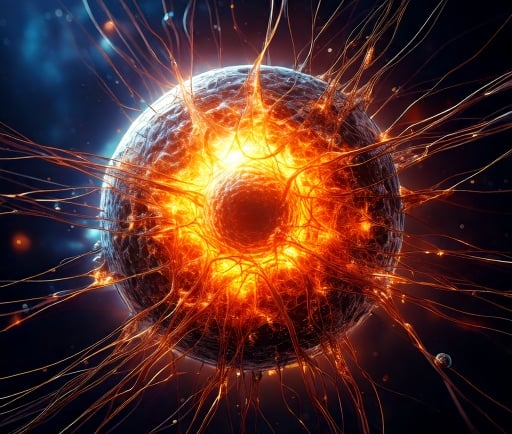The Arca Detector: Unveiling the Mysteries of High-Energy Neutrinos


Introduction to the Arca Detector
The Arca detector, part of the ambitious Cubic Kilometer Neutrino Telescope (KM3NeT), is an innovative scientific instrument located an impressive 3,450 meters below the Mediterranean Sea. This remarkable facility is specifically designed to detect neutrinos—subatomic particles that are incredibly difficult to observe due to their elusive nature. The Arca detector's primary function is to identify high-energy neutrinos, specifically those with energies around 220 billion electron volts.
The Significance of High-Energy Neutrinos
Neutrinos are produced by various cosmic events, such as supernovae, gamma-ray bursts, and even the most powerful astrophysical phenomena in the universe. The detection of these particles provides invaluable insights into fundamental processes occurring in the universe. In recent times, an event cataloged as KM3-230213A drew significant attention due to its high-energy neutrino emissions. Such events are vital in understanding the conditions that catalyze the formation of high-energy cosmic rays, which hold the key to some of the universe's most extraordinary mysteries.
Challenges and Innovations in Neutrino Detection
Detecting neutrinos poses significant challenges, as they rarely interact with matter. As a result, the Arca detector employs several advanced technologies to maximize detection capabilities. Utilizing a vast array of photomultiplier tubes lined across its structure, the detector captures faint light signals that are produced when neutrinos interact with water molecules. The design and placement of the detector enable it to cover a cubic kilometer, enhancing its efficiency in identifying high-energy neutrino events such as KM3-230213A.
Moreover, the remarkable depth of the detector beneath the Mediterranean Sea helps to minimize background noise from cosmic rays that could interfere with the delicate measurements. By optimizing its location, the Arca detector stands as a beacon of modern astrophysical research, pushing boundaries and rewriting the narrative of our understanding of the universe.
Conclusion
As the Arca detector continues its vital quest in high-energy neutrino detection, it becomes an indispensable tool in unraveling the complexities of our universe. The event KM3-230213A not only highlights the detector's capabilities but also reinforces the significance of neutrinos in astrophysical research. Innovations in detection technology, coupled with groundbreaking findings, position the Arca detector at the forefront of contemporary scientific inquiry, paving the way for future advancements in our comprehension of high-energy processes in the cosmos.
